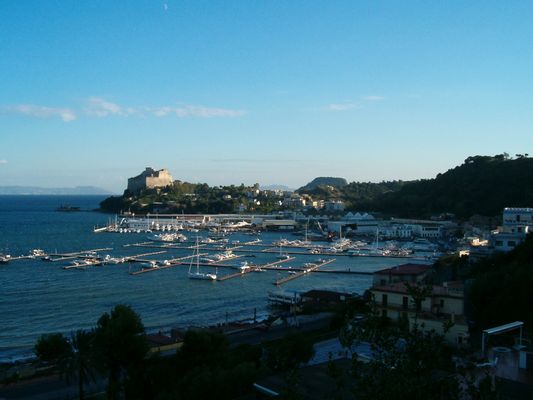Cliffside town with winding streets and Mediterranean views. Home to the famous Piazzetta square and Blue Grotto sea cave. Known for limoncello liqueur.
Capri, an island in Italy's Bay of Naples, is known for its steep coastal cliffs and high-end atmosphere. You can explore the Blue Grotto's vivid azure waters, take a boat tour around the towering Faraglioni rock formations, or stroll through the narrow lanes of Capri town. The island's two main settlements, Capri and Anacapri, offer a range of experiences from shopping in designer boutiques to hiking scenic trails with views of the Mediterranean.
Getting to Capri
You can only reach Capri by boat. Regular ferries and hydrofoils depart from Naples and Sorrento year-round, with additional summer routes from Positano, Amalfi, and Ischia. The journey takes about 30 minutes from Sorrento or an hour from Naples. Upon arrival at Marina Grande, Capri's main port, you can take the funicular railway up to Capri town or a bus to Anacapri.
Exploring the Blue Grotto
The Blue Grotto (Grotta Azzurra) is Capri's most famous natural site. This sea cave glows with an intense blue light created by sunlight reflecting off the limestone floor. To enter, you transfer to a small rowboat and lie flat as you pass through the low cave entrance. While visually striking, be prepared for long wait times in peak season and note that the grotto closes in rough seas.
Hiking Mount Solaro
For expansive island views, take the chairlift from Anacapri to the summit of Mount Solaro. At 589 meters above sea level, you'll see the entire island, the Bay of Naples, and the distant Amalfi Coast. The ride takes about 12 minutes each way. If you prefer hiking, a trail leads to the top in about an hour.
Capri Town vs Anacapri
Capri town centers around the active Piazzetta, lined with cafes and luxury shops. Its narrow lanes lead to viewpoints and high-end hotels. In contrast, Anacapri has a more relaxed atmosphere with whitewashed buildings, artisan workshops, and the Villa San Michele museum. Both towns have their distinct character, so it's worth exploring each.
Beach Clubs and Swimming
While Capri doesn't have many sandy beaches, it has several scenic beach clubs. La Fontelina and Da Luigi, near the Faraglioni rocks, are well-known spots to sunbathe and swim in the Mediterranean. For a more low-key experience, head to the pebble beach at Marina Piccola or take a boat tour to secluded coves around the island.
Local Cuisine
Capri's cuisine reflects its Mediterranean location. Try the island's namesake Caprese salad with local mozzarella, tomatoes, and basil. Seafood is a staple on menus - look for dishes like spaghetti alle vongole (with clams) or grilled catch of the day. For dessert, try torta caprese, a flourless chocolate and almond cake. Da Paolino restaurant, set in a lemon grove, provides a unique dining setting.
When to Visit
Capri is busiest from June to September when temperatures are warmest and all attractions are open. However, this is also when visitor numbers and prices are highest. Consider visiting in May or October for mild weather and fewer tourists. Many hotels and restaurants close from November to Easter, but winter visits can offer a quiet, authentic experience of island life.




















